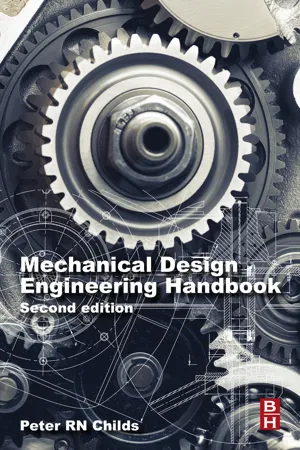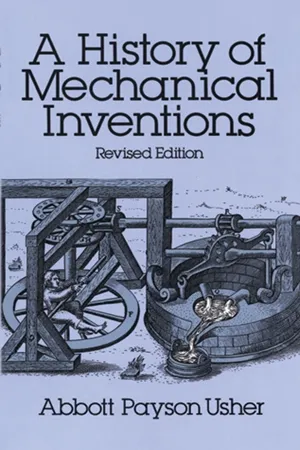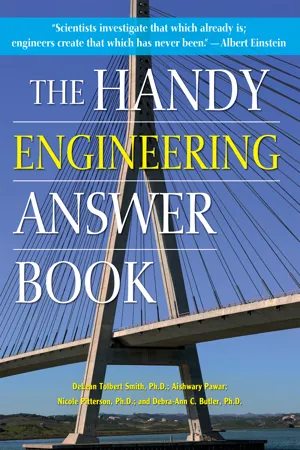Technology & Engineering
Machine Elements
Machine elements are individual components or parts that make up a machine. They include gears, bearings, shafts, fasteners, and other essential elements that work together to enable the machine to function. Understanding the design, selection, and application of machine elements is crucial for engineers and technologists involved in the development and maintenance of various mechanical systems.
Written by Perlego with AI-assistance
Related key terms
3 Key excerpts on "Machine Elements"
- eBook - ePub
- Peter Childs(Author)
- 2018(Publication Date)
- Butterworth-Heinemann(Publisher)
4Machine Elements
Abstract
Many Machine Elements are available as stock items from a wide range of suppliers, while others represent established technology with define rules and approaches for their design and selection. Machine Elements, properly selected and specified, can be used as building blocks within more sophisticated machine designs enabling concentration of effort and resource on the machine, rather than developing each and every machine element from scratch. The aim of this chapter is to introduce the scope of Machine Elements and aspects of their integration in machine design and mechanical engineering.Keywords
Machine; Element; Bearing; Gear; Belt; Chain; Drive; Transmission; Seal; Spring; Fastener; Pneumatic; HydraulicChapter Outline- 4.1 Introduction
- 4.2 Bearings
- 4.3 Gears, belts and chains
- 4.4 Clutches and brakes
- 4.5 Seals
- 4.6 Springs
- 4.7 Fasteners
- 4.8 Wire rope
- 4.9 Pneumatics and hydraulics
- 4.10 Enclosures
- 4.11 Conclusions
- References
- Websites
Nomenclature Generally, preferred SI units have been stated.aacceleration (m/s2 )F force (N)L length (m)m mass (kg)OEM original equipment manufacturer4.1 Introduction
The design activity involves endowing form and ensuring functionality of a given product, service or system. The function of many products depends on devices that modify force or motion and consist of a number of interrelated units. An example is a gearbox that modifies the torque-speed characteristic of a prime mover to match that of the load and comprises gears, shafts, bearings and seals. Such devices that modify force or motion are called machines and the interrelated units are sometimes known as Machine Elements. The technology base has developed to a mature status in this area providing a number of such devices that can in some cases be used as they are or designed fit-for-purpose. - eBook - ePub
A History of Mechanical Inventions
Revised Edition
- Abbott Payson Usher(Author)
- 2013(Publication Date)
- Dover Publications(Publisher)
CHAPTER VIThe Mechanical Equipment of Pre-Christian Antiquity
I
The mechanical equipment of any given society consists largely of tools and machines. In the restricted sense that is most useful for historical study or mechanical analysis, the term “tool” may best be confined to implements for the direct execution of certain kinds of work, notably cutting, striking, or rubbing. Although all tools were originally used in the hand, many have been adapted to machinery without significant change of form or purpose. The looser uses of the term are obviously due to various special circumstances which can be readily understood, but when it is necessary to deal with long periods of time there is need of precision and certainty of language.The term “machine” presents an almost hopeless problem. Popular usage is extremely lax and the list of formal definitions cited by Reuleaux discloses a range of meaning and a laxity of expression that is hardly a credit to the engineering profession. The treatment of these problems by Karl Marx followed closely the thought of engineers like Poncelet in France, and the technical writers Ure and Babbage in England. The general position is concisely stated by Marx:All fully developed machinery consists of three essentially different parts, the motor mechanism, the transmitting mechanism, and finally the tool or working machine.1This definitions ignores the distinction that can advisedly be made between mechanical elements and an extensive train of mechanism. Many individual elements enter into different trains of mechanism, sometimes with the same function, sometimes with different functions. Of all the individual elements, the screw is the most varied in its application. It may serve merely as a fastening; or it may, as in the lathe, control the entire operation. It is, therefore, essential to distinguish between functionally distinct parts and the profoundly different wholes into which they may enter. - eBook - ePub
- DeLean Tolbert Smith, Aishwary Pawar, Nicole P. Pitterson, Debra-Ann C. Butler(Authors)
- 2022(Publication Date)
- Visible Ink Press(Publisher)
In a motor vehicle, the powertrain (also known as the torque train) consists of the source of propulsion and the drivetrain system, which transfers this energy into forward movement of the vehicle. Thus, it starts to form the engine and ends at the wheels passing through the bell housing, transmission, driveshaft, and differential. It is a system of mechanical parts that takes the power, or output, of the engine and, through specific gear ratios, slows it and transmits it as torque.DID YOU KNOW?What is the difference between a machine and a mechanism?A mechanism is made up of links forming a restricted kinematic chain. Its primary purpose is to transmit or modify motion. A machine is a mechanism concerned with forces that need to be transferred, and it is used to change mechanical work.How do mechanisms work? What are different types of mechanisms?The essential physical or chemical procedures associated with or responsible for an activity, reaction, or other natural phenomena are termed as mechanisms. In engineering, a mechanism is a device that changes input forces and movement into an ideal set of output forces and motion. Mechanisms generally comprise components such as gear trains, chain drives, linkages, brakes, etc. Types of mechanisms include planar, spherical, and spatial mechanisms.What are turbo machines?Turbo machines transfer energy between a rotor and a fluid, including both turbines and compressors. In a typical context, turbo machines are systems in which one or more rotating blade rows’ dynamic motion contributes energy to or extracts energy from a continually flowing fluid—for example, heavy-duty gas turbines, jet engines, etc.What are reciprocating compressors?Reciprocating compressors emit compressed air or gas pulses, which are discharged into the piping that carries the air or gas to its final destination. One or more cylinders and pistons that move within them, similar to an internal combustion engine, are the main components of the compressor. These are widely used in the chemical, oil, and gas industries for moving compressible fluids reliably.
Index pages curate the most relevant extracts from our library of academic textbooks. They’ve been created using an in-house natural language model (NLM), each adding context and meaning to key research topics.


